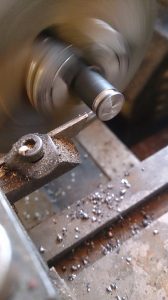
Turning is a machining process used in the manufacturing industry to remove material from a workpiece using a stationary cutting tool. It’s typically performed using a lathe. Once secured to the lathe, the workpiece will rotate. The cutting tool will then press against the rotating workpiece to cut and remove some of its material. Diamond turning is a unique turning process that involves the use of a diamond-tipped cutting tool.
Overview of Diamond Turning
Diamond turning follows the same principles as traditional turning operations: A workpiece is secured to a lathe, after which it’s exposed to a stationary cutting tool. The difference is that diamond turning requires the use of a diamond-tipped cutting tool, whereas traditional turning operations are performed with steel, titanium or other metal cutting tools.
With diamond turning, a special high-precision cutting tool featuring is used on the lathe. The diamond may be natural or synthetic. Regardless, all diamond turning operations are performed using a diamond-tipped cutting tool.
Most diamond turning operations involve the use of a single-point cutting tool. In other words, the diamond-tipped cutting tool only has a single, fixed point. Known as single-point diamond turning (SPDT), it’s become synonymous with this machining process. However, there are diamond turning operations that involve the use of a multi-point cutting tool. The diamond-tipped cutting tool may feature a contoured head to achieve a specific size and shape with the finished workpiece.
Benefits of Diamond Turning
Diamond turning is used primarily in machining applications that require a high level of precision. It’s usually performed using a CNC lathe. As a result, manufacturing companies can program diamond turning operations using a computer. The computer transmits the signals to the lathe, which then executes the operation by selectively cutting the workpiece using a diamond-tipped cutting tool.
Furthermore, diamond turning is particularly effective when used to manufacture infrared (IR) optics. It yields a smooth surface finish that’s not possible with other turning or machining processes. The manufacturing of IR optics, of course, is just one of many practical applications for diamond turning.
Other Diamond-Based Machining Processes
In addition to turning, diamonds are used in several other machining processes, some of which include milling, honing and grinding. Diamonds, of course, are expensive, making these processes somewhat restrictive for manufacturing companies. Nonetheless, diamonds are recognized as being one of the hardest materials in the world, making them useful in a variety of machining processes.
No tags for this post.